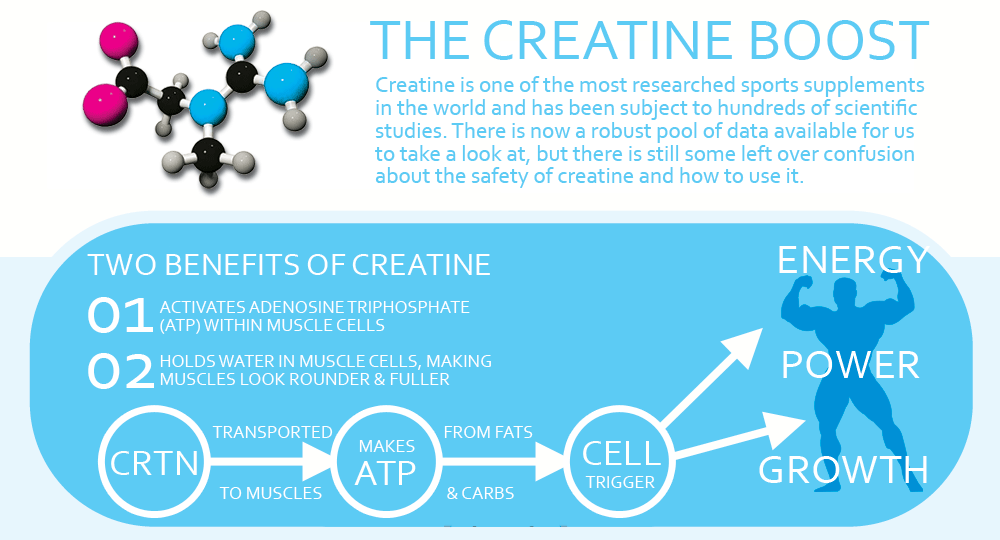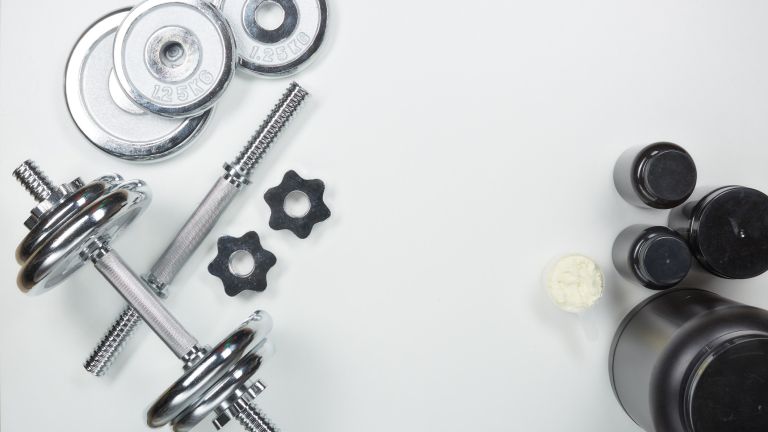Everything You Need to Know About Creatine
So creatine, you may have heard of it if you are involved in the fitness world or have run into it when researching options for gaining muscle. so what is it? and most importantly, how does it work? These are just some of the questions that might you have about this supplement. Creatine is a substance found naturally in the cells of your muscles, it helps your muscles produce more energy when lifting heavy weight or doing high intensity workouts. Adding more creatine in your body can help you build and sustain muscle more effectively.
To understand more, let’s understand how our muscles are constantly being contracted, even if we are not moving.

While you sit there and read this, there are muscles that are working to keep your body up-right. So, what’s going on in our muscles? All of your muscles are made up of smaller muscle fibers that tear and repair while working out, helping you build them and make your muscle tissue larger. There are many muscle fibers that contribute to an entire muscle.
Within a single muscle fiber, you can go one level deeper and find many Myofibrils. Myofibrils are made of contractile cells called Sarcomeres, these Sarcomeres are what help the muscle contract by pulling segments of our muscle together. In order for these sarcomeres to work correctly, you need a molecule called ATP, which is the main fuel source for our bodies cells, which is where creatine comes into help.
When ATP is used to help create a muscle contraction, it then is hydrolyzed and loses a phosphate group. In that process, the energy we need is created, but we are no longer left with ATP. Instead we are left with an ADP molecule. ADP is not as useful as ATP is in our bodies, in fact it is kind of useless unless its transformed back into ATP. Creatine is going to donate one of its phosphate molecules to ADP to convert it back to ATP.
Why is that so special? Well the body can only make so much ATP before it starts to do harm on the body. Excessive anaerobic means of creating ATP can cause a build up lactic acid. This can make you sore the next day after working out and an excess amount of it doesn’t do us any good. Our muscles could always use ATP when in intense exercise. Creatine helps by acting somewhat like a recycling center.

Creatine is already found in our bodies, but can be a great supplement to utilize when starting a new workout program or looking to build muscle. When taking an appropriate dose of creatine, these side effects can be valuable. The most common negative side effect would be weight gain, since creatine triggers your muscles to absorb a lot of water. Which is why if you are going to be taking it, you need to stay hydrated. But if you are looking to gain muscle this may not be a negative.
So should you be taking it? It truly depends on your goals. It’s an effective way to give you an edge in the gym and is not dangerous when taken within moderation. Gain an understanding of how much muscle you want to build and test out creatine to see if it helps!
